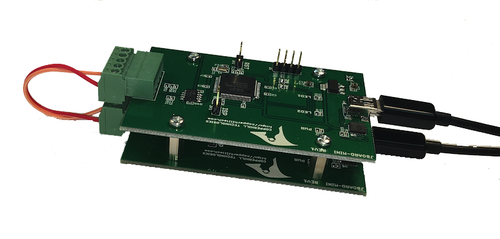Recent Posts
SAE J1939 Technology for Agricultural Applications
Posted by on
 The rapid advancement of technology in the agricultural sector has led to the integration of sophisticated systems to enhance efficiency, productivity, and sustainability. One such innovation is the use of the SAE J1939 protocol, a communication standard widely utilized in the field of commercial vehicles and machinery. In agricultural applications, this protocol plays a pivotal role in enabling interoperability, improving machine diagnostics, and enhancing data-driven decision-making.
The rapid advancement of technology in the agricultural sector has led to the integration of sophisticated systems to enhance efficiency, productivity, and sustainability. One such innovation is the use of the SAE J1939 protocol, a communication standard widely utilized in the field of commercial vehicles and machinery. In agricultural applications, this protocol plays a pivotal role in enabling interoperability, improving machine diagnostics, and enhancing data-driven decision-making.
Understanding SAE J1939
SAE J1939 is a high-level communication protocol developed by the Society of Automotive Engineers (SAE). It operates over the Controller Area Network (CAN) bus and facilitates the exchange of data between electronic control units (ECUs) in heavy-duty vehicles, including tractors, harvesters, and other agricultural equipment. The protocol provides a standardized framework for communication, ensuring that different devices can seamlessly interact with one another, regardless of the manufacturer.
The core components of SAE J1939 include:
- Message Identifier (PGN): Each message transmitted over the CAN bus is identified by a Parameter Group Number (PGN), which defines the data type and its purpose.
- Data Field: The content of the message, which may include parameters such as engine speed, fuel consumption, or hydraulic pressure.
- Transport Protocol: Mechanisms for transmitting large data packets beyond the 8-byte CAN frame limit.
Key Benefits in Agriculture
- Interoperability Agricultural machinery from different manufacturers often needs to work together in a single operation. SAE J1939 ensures that ECUs in various machines, such as tractors and implements, can communicate effectively. This interoperability reduces downtime and simplifies the integration of new equipment.
- Enhanced Diagnostics With the increasing complexity of agricultural machinery, efficient diagnostics are essential to minimize downtime and repair costs. SAE J1939 provides real-time access to diagnostic trouble codes (DTCs) and operational data, enabling technicians to quickly identify and resolve issues.
- Data Collection and Analysis Modern farming relies heavily on data-driven decision-making. SAE J1939 allows the collection of critical operational data, such as engine performance, fuel efficiency, and implementation usage. This data can be analyzed to optimize machinery performance, reduce fuel consumption, and improve overall farm management.
- Improved Safety and Control The protocol enables advanced safety features, such as automatic shut-off and precise control of machinery operations. For example, it can facilitate the synchronization of speed and position between a tractor and a trailer, reducing the risk of accidents and improving efficiency.
Applications in Precision Agriculture
Precision agriculture is a farming approach that utilizes technology to optimize resource use and maximize crop yields. SAE J1939 plays a critical role in this domain by:
- Connecting Sensors and Actuators: It allows seamless communication between sensors (e.g., soil moisture, GPS) and actuators (e.g., sprayers, seeders).
- Automated Machine Guidance: SAE J1939 supports the integration of GPS-based guidance systems, enabling automated steering and precise field operations.
- Variable Rate Technology (VRT): The protocol facilitates real-time data exchange, enabling machinery to adjust inputs like fertilizer or pesticide application based on field conditions.
Future Prospects
As the agricultural industry continues to embrace digitalization, the role of SAE J1939 is expected to grow. Emerging trends, such as the Internet of Things (IoT) and artificial intelligence (AI), will further enhance the capabilities of this protocol. For instance, cloud-based platforms could leverage SAE J1939 data to provide predictive maintenance insights and optimize fleet management.
Conclusion
SAE J1939 technology is a cornerstone of modern agricultural operations, providing a robust framework for communication and data exchange among machinery. Its benefits in terms of interoperability, diagnostics, data analysis, and safety make it indispensable for precision agriculture and other advanced farming practices. As technology evolves, SAE J1939 will continue to play a crucial role in driving agricultural innovation and sustainability.
SAE J1939 Starter Kit and Network Simulator
Our JCOM.J1939 Starter Kit and Network Simulator was designed to allow experienced engineers and beginners to experiment with SAE J1939 data communication without needing to connect to a real-world J1939 network, i.e., a diesel engine.
To establish a network, you need at least two nodes. This applies especially to CAN/J1939, where the CAN controller will shut down after transmitting data without receiving a response. Therefore, our jCOM.J1939 Starter Kit and Network Simulator consist of two J1939 nodes: our jCOM.J1939.USB, an SAE J1939 ECU Simulator Board with USB Port. More Information...
 Loading... Please wait...
Loading... Please wait...

